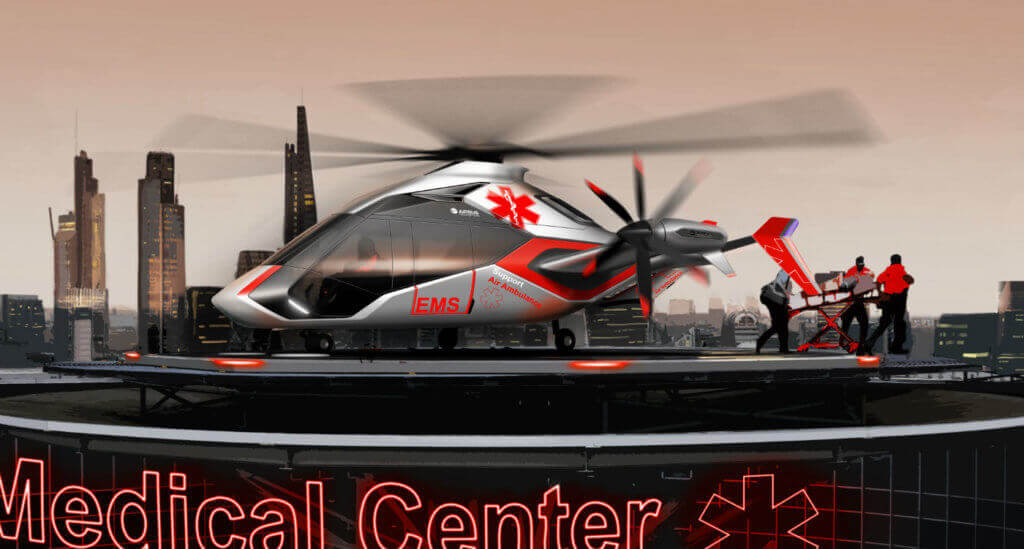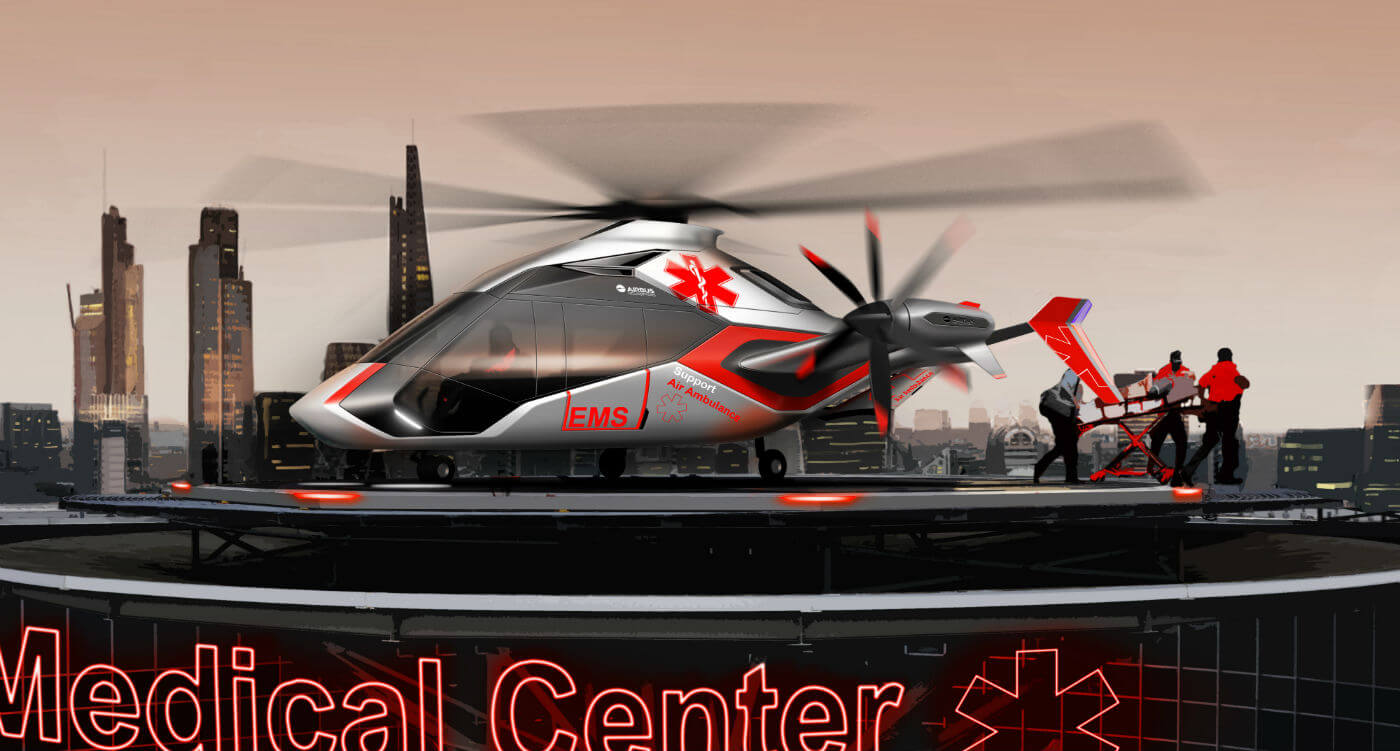Innovation activity has been intense at Airbus Helicopters as the company is studying a follow-on to the X3 high-speed compound helicopter demonstrator, while rethinking some component designs on in-production helicopters to reduce costs. Even less conventional is the use the airframer is considering for near-future electric propulsion technology, planning to fly the prototype of an autonomous urban air taxi by year-end. To achieve this aim, engineers have been using new research and development methods.

Developed under Europe’s Clean Sky 2 public-private partnership in aerospace research, the compound helicopter demonstrator will have its preliminary design review this year. The critical design review is scheduled for 2018 and the first flight for 2020. The schedule has thus slipped by one year since Airbus unveiled the project in June 2016.
The target cruise speed is 190 knots. This is slower than the 220 knots that Airbus was referring to when the X3 was test-flown in the early 2010s, but still higher than the usual 140-150 knot cruise speed for a conventional helicopter. Airbus’ goal is to fly fast at reduced cost. Thanks to the better efficiency of the architecture, the increase in speed will go along with a proportionally smaller increase in hourly cost, Tomasz Krysinski, head of research and innovation at Airbus Helicopters, explained. The bottom line is an expected 25 percent lower cost per passenger-mile.
Compared to the X3, which was reusing components from other aircraft, the 2020 demonstrator will be “optimal,” Krysinski said. For example, the shafts linking the main gearbox to the two propellers will use no bearing. Thanks to a high-voltage electric system architecture, cruise flight on a single engine – for better fuel efficiency – becomes possible. “A high-voltage electric starter can swiftly restart the dormant engine, if needed,” Krysinski explains.
In electric propulsion, “there is not so long between now and an application,” said Jean-Brice Dumont, then-executive VP of engineering (he has since moved to an equivalent role at Airbus Commercial Aircraft). “With a reasonable improvement in electric energy storage, we can aim at flying electric in the near future.” This would be for limited durations, however.

Airbus Helicopters is thus supporting Project Vahana, a self-flying air taxi concept revealed last year by Airbus Group’s Silicon Valley outpost A³. Do seasoned engineers in Marignane and Donauwörth have to give reality checks to their new Californian colleagues? “Some people in my team would put it that way; but the intent is to bring disruption. Guys from a different environment can bring new ideas. We have chaired Vahana’s critical design review and we respect their work – these two ways of innovating complement each other very well,” Dumont answered.
Perhaps less demanding a project — as it is only required to carry small, non-human payloads — the Skyways joint project with the National University of Singapore is scheduled to begin operations by year-end. A parcel delivery system with four or five stations on the campus, it will use small unmanned air vehicles (UAVs). Two prototypes have been flying in Marignane.
The idea is to test a last-mile delivery system at a small scale. The UAVs will draw from the aerospace sector, for its safety standards, and the toy market, for its low costs. A profitable system at the scale of a large city would require 200 UAVs flying 18 hours per day for a combined 15 million flights per year, according to Airbus’ estimate. “We believe we will take something out of this, maybe not carrying parcels,” Skyways project leader Tristan Serretta says.
Meanwhile, innovation is finding its way into in-production helicopters like Airbus’ light helicopter range. A composite-material Fenestron shrouded tailrotor will soon be produced as a single component. An aft transmission shaft has been redesigned and a new manufacturing process is being considered. Therefore, the shaft will require a single bearing, instead of the current six bearings.
Joint work with external researchers may help find new ideas. A university in the neighboring city of Marseille is looking at bio-inspired engineering and Airbus Helicopters is keeping an eye on it for future mechanical component design. “When we look at the functionalities of our mechanical parts, we can see nature has a different design for the same functionalities,” an Airbus engineer said.










Great technology. Airbus could be used in delivery as part of fulfillment services for fulfillment companies. Fast delivery is very valuable right now, many would invest.